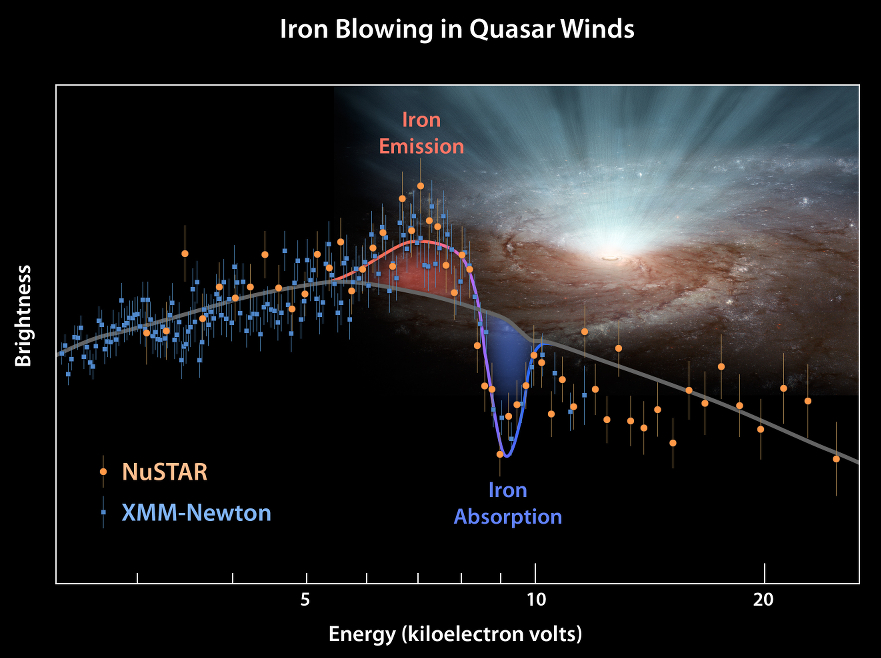
 Credit: NASA/JPL-Caltech/Keele Univ.
Credit: NASA/JPL-Caltech/Keele Univ.
UFOs Surrounding a Black Hole
So-called "active" galaxies harbor supermassive, ravenous black holes at their centers. These black holes are rapidly gobbling up material from the host galaxy, which generates lots of bright, high energy radiation, as material spirals down into the event horizon of the black hole, faster and faster and hotter and hotter, until it passes through the event horizon never to be seen again. The inspiralling material forms a flattened "accretion disk", and radiation produced by this disk can be so powerful that some of the disk material (arguably, the luckier material) gets blown off the disk in the form of a powerful wind. These winds, sometimes called "ultra-fast outflows" (UFOs), could have a tremendous impact on the host galaxy, if the outflows were emitted in all directions off the disk. But are they? A new joint study of an active galaxy called PDS 456 by two X-ray satellite observatories, XMM-Newton and NuSTAR, have helped answer this question. X-ray spectra obtained by XMM-Newton of PDS 456 showed that iron atoms in fast material moving towards us were scattering X-rays out of our direction, causing an observed drop in X-ray brightness over a limited energy range of the X-ray spectrum and producing the iron absorption feature shown in the image above. But NuSTAR helped reveal a characteristic excess in emission at X-ray energies slightly below the iron absorption feature. This excess is produced by fast moving iron atoms in an extended part of the fast outflow that are scattering X-rays in our direction. The XMM-Newton and NuSTAR study shows that the fast wind from accretion disk around the central black hole in PDS 456 is powerful enough to push vast amounts of matter outward through the galaxy, and may even help suppress the formation of stars in the central bulge of the galaxy.
Published: February 23, 2015
<
HEA Dictionary ● Archive
● Search HEAPOW
● Other Languages
● HEAPOW on Facebook
● Download all Images
● Education ● HEAD
>

Each week the HEASARC
brings you new, exciting and beautiful images from X-ray and Gamma ray
astronomy. Check back each week and be sure to check out the HEAPOW archive!
Page Author: Dr. Michael F. Corcoran
Last modified Monday, 26-Feb-2024 17:11:15 EST


